A few summers back, I received a letter from one of my best friends, written from Prospect Park in Brooklyn. She wrote of blue herons, boys in horn-rimmed glasses, our dreams of moving together to a communal property, and, towards the end, of a writer she thought I would like: Elsa Gidlow. My friend had been particularly inspired by Druid Heights, the unfettered bohemian community just outside of Muir Woods in the San Francisco Bay Area, where this radical feminist anarchist lesbian poet had lived for the last half of her life. A copy of Gidlow’s autobiography would arrive on my doorstep within the week, my friend wrote.
Elsa: I Come with My Songs was published in 1986 by Booklegger Press, a woman-owned publishing imprint out of San Francisco. According to the book jacket, Gidlow was a “poet-warrior, an honored feminist poet, a philosophical anarchist and a Taoist bon vivant.” The back cover included a blurb from the East-meets-West philosopher Alan Watts who said, “From the first meeting, Elsa enchanted me, a witch casting a spell.” In the author photograph, Gidlow wore a long-sleeved white turtleneck, her octogenarian body still lithe and strong. She posed with one hand resting on a crooked knee and the other pressing up against a stone statue of a bulgy-eyed frog. Her eyes, below a black beret, looked into the camera lens with ferocious self-assurance. Behind her, a wild garden, the shadows of trees in the distance.
At the time, I lived with my new husband in a condo in Santa Rosa, a city about one hour north of San Francisco, and 40 miles from Druid Heights, which still exists, albeit in a much more subdued form than during its heyday. My husband worked for a non-profit and I had gone back to school for my MFA while piecing together an income from teaching and the occasional writing assignment. I fancied a life lived outside of the norm, as I chafed against the walls of capitalism and commerce, and to me, life in the condo and in the nowhere town of Santa Rosa felt excruciatingly pedestrian.
Gidlow’s absolute dedication to her art soon swept me up into the narrative. Her unabashed feminism and belief in the possibility of a radical societal transformation delighted me. And, after years of living in Northern California, I wasn’t freaked out by her nature-loving, West Coast mysticism. Fairies and talking plant spirits, sure! Her enthusiasm for life was powerful and I immediately took her on as a mentor, a fierce elder that might guide me beyond the mess of my mind where the urge to create was constantly embattled by a feeling of scarcity.
Gidlow lived in Marin County, at the edge of the Pacific Ocean, for more than half her life, but she grew up in Quebec, the daughter of a working-class family that emigrated from England to Canada in the early 20th century. The family was impoverished, a state that Gidlow spent her adult years avoiding at all costs, by remaining gainfully employed and living simply. She worked various jobs over the years, always knowing that her primary love was poetry, even as she trudged along as a business writer and Western Trade journal editor. At the age of 25, Gidlow published On a Grey Thread, one of the first volumes of lesbian poetry in North America. She left Canada in 1920, moving to New York, where she worked at a magazine called Pearson’s. Around 1926, she migrated to San Francisco with her life partner Violet Henry-Anderson, who went by “Tommy.” After Tommy died of lung cancer, Gidlow used an inheritance of $700 to purchase a plot of land with a “huddle of wood” that no one else would consider a house, she writes, on Redwood Road in Fairfax. She called the place “Madrona” and declared the land would heal her after years of struggle in the wake of Tommy’s death. Gidlow lived at Madrona for more than a decade, turning the huddle into a comfortable house, and building a garden from scratch, with the help of her new partner Isabel.
In the mid 1950s, Gidlow entered into a land partnership, buying a former chicken ranch on five acres of cedar and Eucalyptus-ringed land on Mount Tamalpais, the same mountain where Japhy Ryder hikes in Jack Kerouac’s Dharma Bums. She was able to purchase the plot, which would otherwise have been out of her means, by joining forces with a loincloth-wearing architect named Roger Somers and his wife Mary.
Gidlow wrote of her first visit to the acreage that would become her home:
I knew even before we reached the end of the mile of dirt road through the oak and bay laurel woods that it was waiting for me. The road itself whose hazards had to be traversed at eight to ten miles an hour was more a meditation than a means of getting from one place to another. Silently I absorbed the stillness, the sunny solitude, the scents of grasses and wildflowers and mingled eucalyptus and bay. Those spoke directly of the tranquility I had been longing for.
These days, the location doesn’t seem all that isolated, but back in 1955 it was still unpopulated territory for the most part. The place became known as Druid Heights, named because the fog-shrouded summer days reminded Gidlow of her ancestral home, the moors of England, where Druid women had prevailed. It was also a tribute to Gidlow’s close friend and mentor Ella Young, the Irish mystic and mythologist, who was christened the godmother of Moy Mell, a utopian commune established in the 1930s by President Chester Arthur’s grandson, the sexologist and astrologer Gavin Arthur.
A few years after reading I Come with My Songs, I had the opportunity to visit Druid Heights, though it remains off limits to the public, and still relatively hard to locate. By this time, I’d separated from my husband after three years of marriage, eager to escape a relationship that I’d convinced myself had become too constraining. I’d taken a job as a staff writer at the local newspaper and entered into a glum, loveless affair with an unemployed former heroin addict. I found that I missed my husband more often than not, but my job provided a welcome distraction from the mess of my personal life. I was on assignment to write about utopian communities and had been invited to go on a tour of Druid Heights, the place that Gidlow had actually called an “unintentional community,” as long as I promised not to reveal the actual location in print. People still lived on the property, including Ed Stiles, a furniture maker who’d been one of the original inhabitants from the days when Gidlow, Somers, Gary Snyder, and Alan Watts lived below the Eucalyptus trees, finding their bliss in art, alcohol, moon rituals, acid, Zen talks, gardening, jazz, sex, and meditation.
About twenty of us met in a Muir Woods parking lot on a cool, grey Thursday morning. We hiked up a hill for a mile or so, through Coastal Redwoods, ending up on a dusty road with only a mailbox as a signpost. It was the same oak-lined road Gidlow had described in her autobiography. I kept to myself. Sadness tended to overlay my days now, especially now that the lover and I had parted ways and I was alone, forced to deal with what had happened to my marriage. As I walked, I was struck with longing for my husband. This adventure would have been just the sort of weird, nature-focused thing he would have loved, even without being a Gidlow fan like me.
Of course, anything as traditional as monogamous marriage would likely have been frowned upon when the Heights was in full bloom during the ‘60s and ‘70s. The spot became a mecca for outsiders and insiders alike. Visitors who came around to tune in and drop out included Dizzy Gillespie, Tom Robbins, Lily Tomlin and Neil Young. Gary Snyder presided over Chinese Moon Festival ceremonies there. Margot St. James, the founder of COYOTE (Call Off Your Old Tired Ethics), a prostitute’s union that demanded decriminalization of the world’s oldest profession, lived there, as did Catherine MacKinnon, the infamous feminist theorist. Alan Watts lived (and died) there, spending his time in a round, wooden library built especially for him by Somers (who also died at Druid Heights—in a self-designed, redwood hot tub, no less). Like the rest of Somers’s outlandish architectural designs, Watts’s library looks like a cross between a Japanese temple and something out of Middle Earth. After Watts drank himself to death, Gidlow transformed it into her Moon Temple, where she performed ceremonies and rituals with the worshipful young lesbian community that had risen up around her. In short, it was a place of rich and varied history.
The tour took us up a set of wood stairs embedded into the side of a hill and then onto a ridge that held Gidlow’s compact house and the library. The beret-clad, beatnik poetry-spouting docent shared a few lines of history (and warnings about rat infestations), and I bid my time until I was able to get closer to the home where Gidlow had lived for three decades. First, we passed her meditation hut, a hobbit-hut of a place, with wave-like wooden shingles and etched glass windows—a distinctively Somers design. The docent stopped and read some factually incorrect information about Gidlow, and I corrected him. I felt territorial about her. Most everyone on the tour knew about Alan Watts, but only a couple of us knew about Elsa Gidlow.
We were warned not to get too close because of the thick, black power lines that had fallen to the ground, acting as a de-facto electric fence around the house. I stood there for a while, as everyone else walked up the hill towards the tour’s next stop, the “zendo” where Watts gave talks that occasionally drew monks from San Francisco Zen Center’s Green Gulch farm, a few hills over. I watched Gidlow’s house somewhat desperately—the overgrown garden, the windows shining in the late afternoon sun—as if by standing there for long enough, I could transmit Gidlow’s spiritual essence, her courage to do whatever the hell she wanted with her life, into myself. She’d lived and died there, her ashes buried beneath an apple tree. The group had moved farther away at this point and it was absolutely quiet. I moved closer to the downed power lines, thinking I might be able to peek through a window. Thanks to a healthy fear of electrocution, I gave up and turned around to catch up with the tour.
The experience of being in close proximity to the place that had last hosted Elsa’s living spirit stayed with me for a long time. The heaviness I carried at all times seemed to deepen after the visit, so much so that my ritual-loving therapist, the one who taught me about the power of ancestors, seems convinced that a bit of Gidlow’s ancestral energy had clung to me. She’d followed me home from Druid Heights. We’d become too close. I would have to tell Elsa goodbye, my therapist said. We did an exercise where I leaned back on the couch, and where she said things like, “Elsa, thank you for your guidance. You are free to leave now,” and I became dizzy and confused, and then somehow light again. The spirit had lifted, though in my dreams I see myself roaming under those tall, sun-dappled trees of Druid Heights, lingering in the fog, calling to the ghosts for an insight or a sign.
***
Rumpus original art by Clare Nauman.

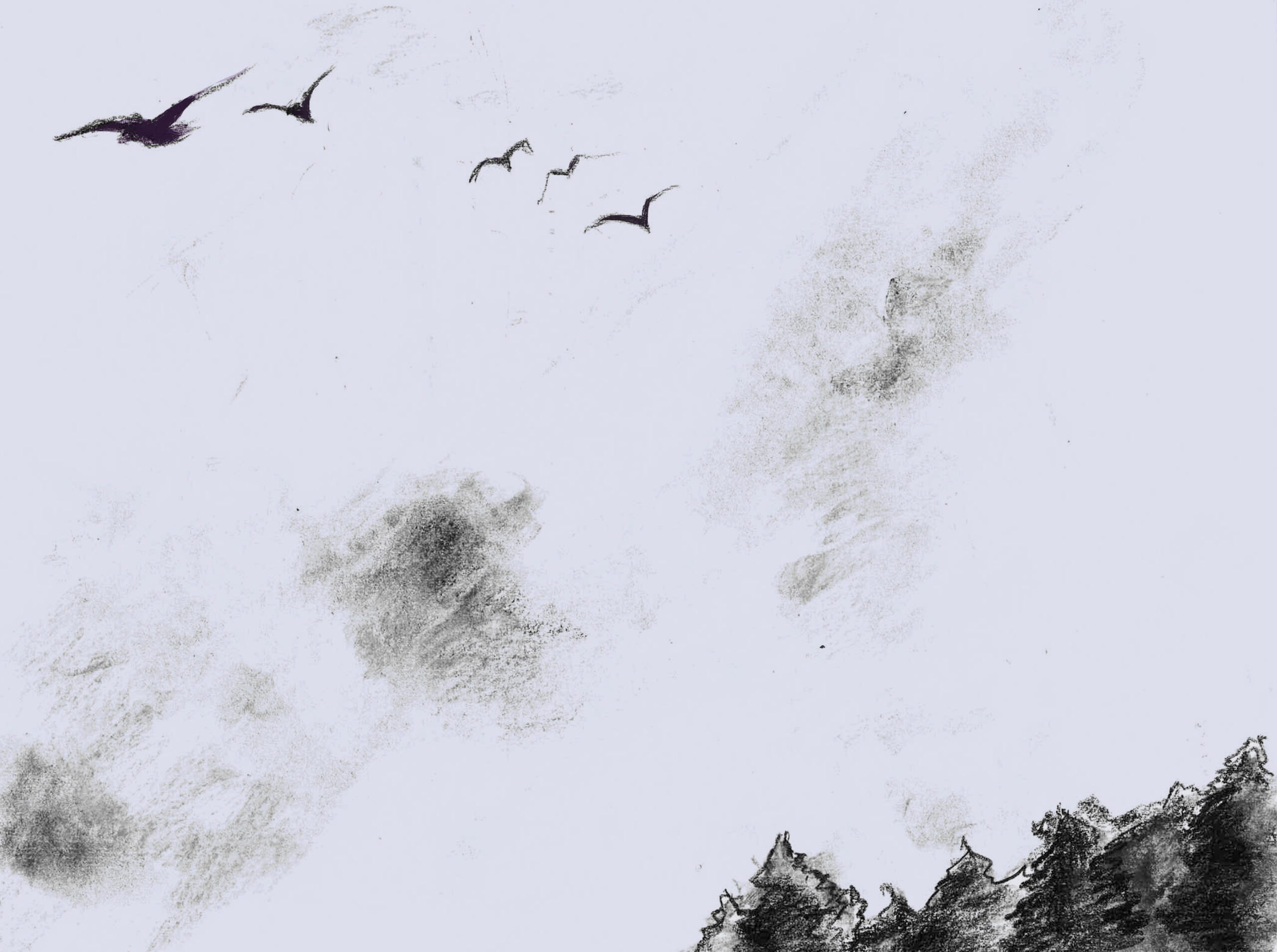
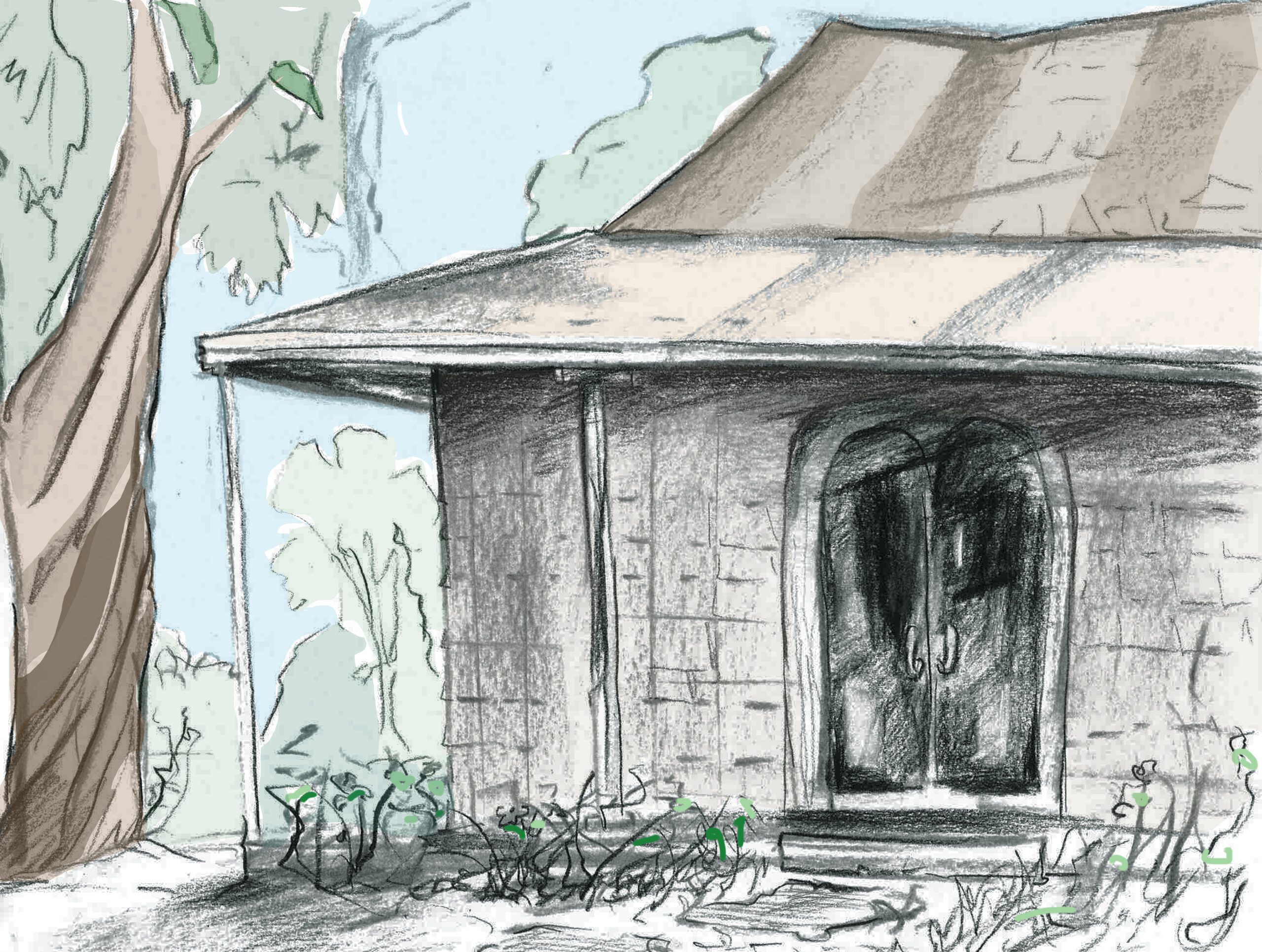
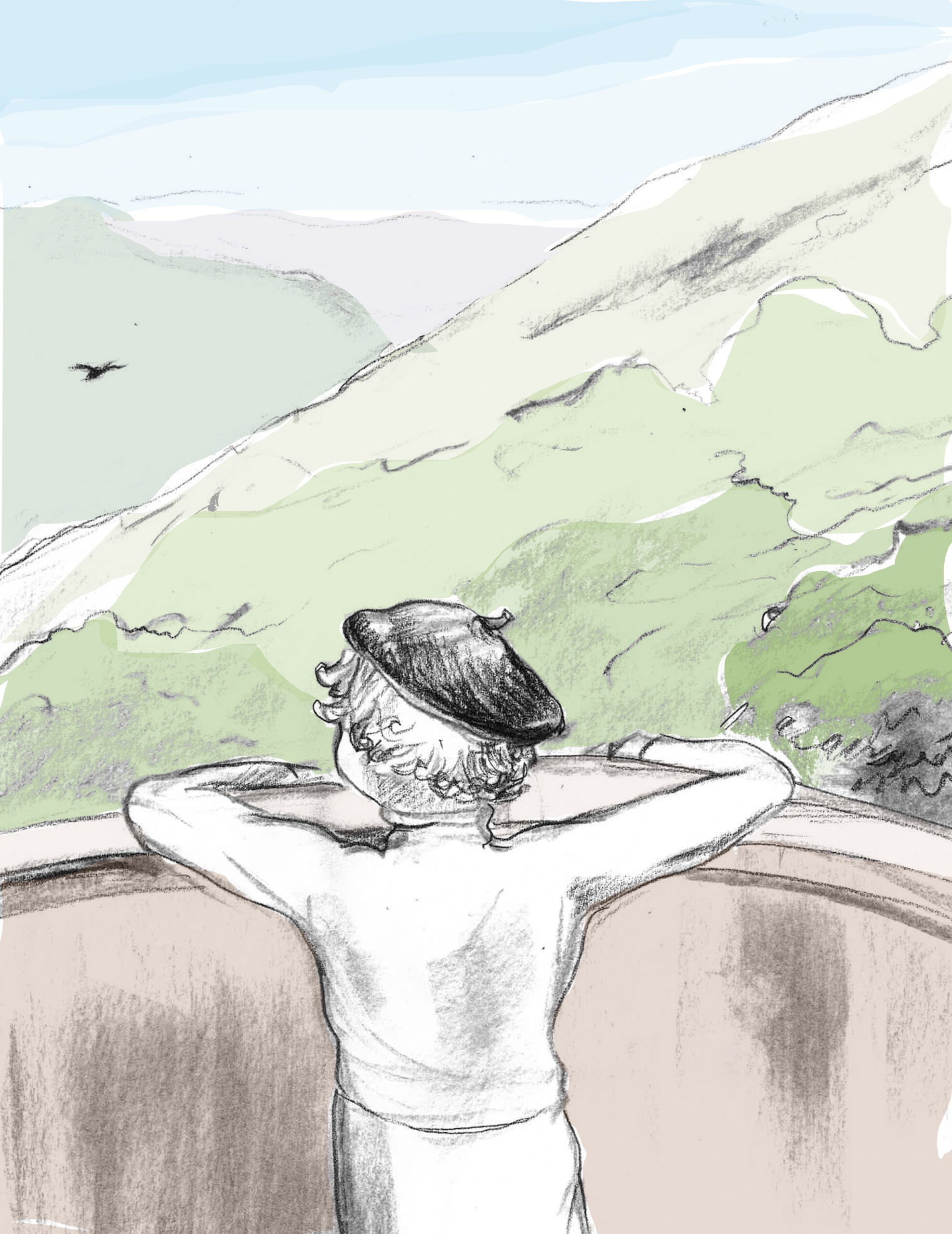
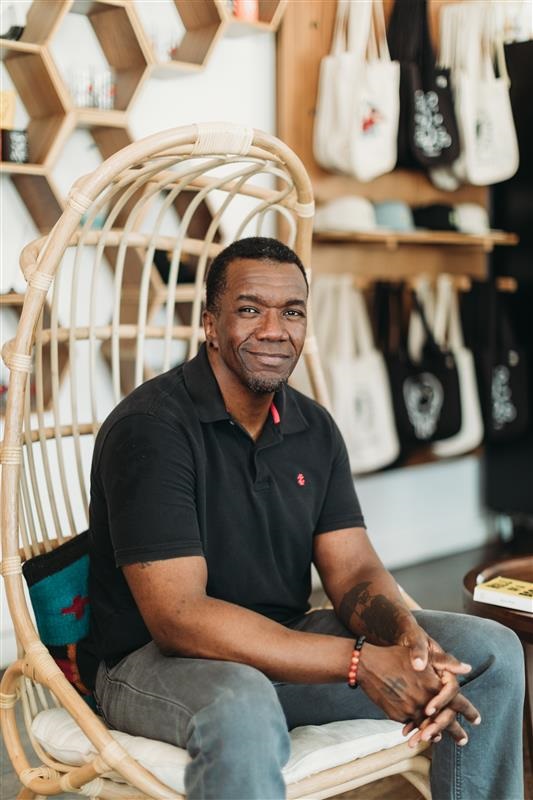
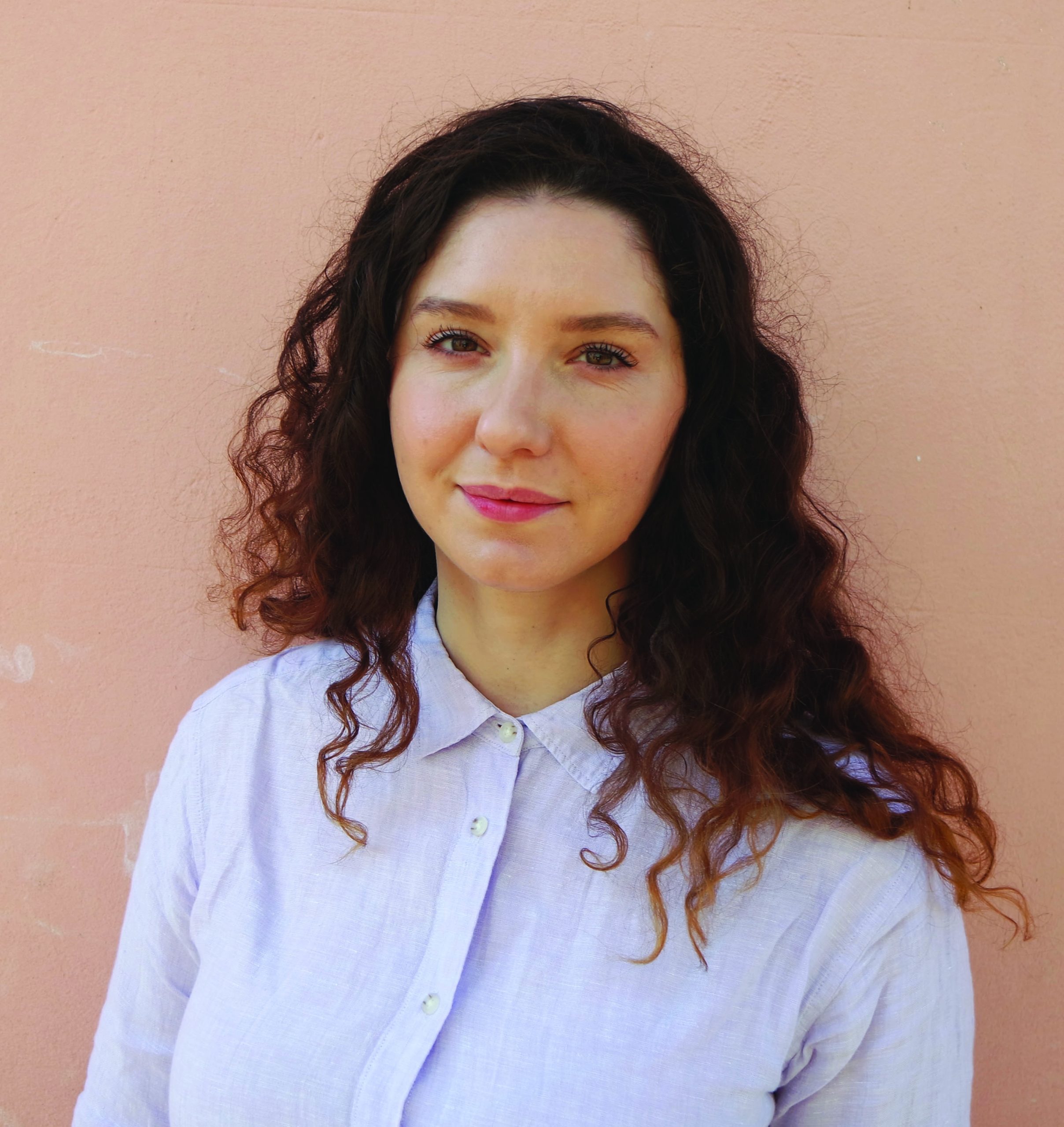


One response
Beautiful tribute. I’ve just launched my short documentary film on Druid Heights and had the pleasure of touring Elsa’s home. She inspires me as well.
http://mendelsonimages.com/portfolio/druid-heights/
Click here to subscribe today and leave your comment.